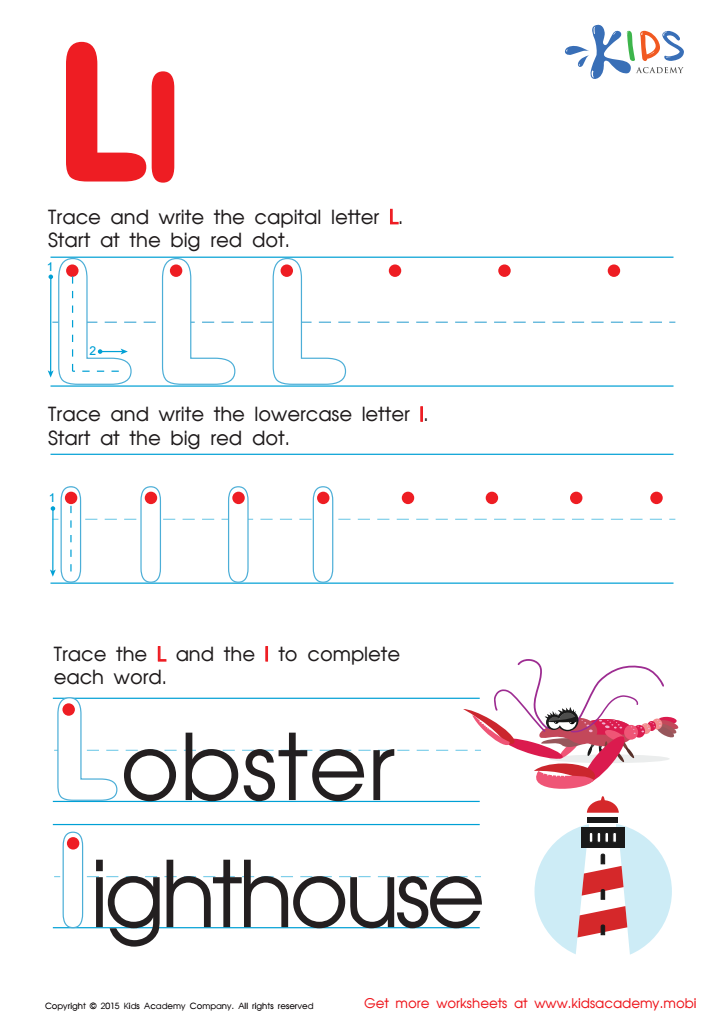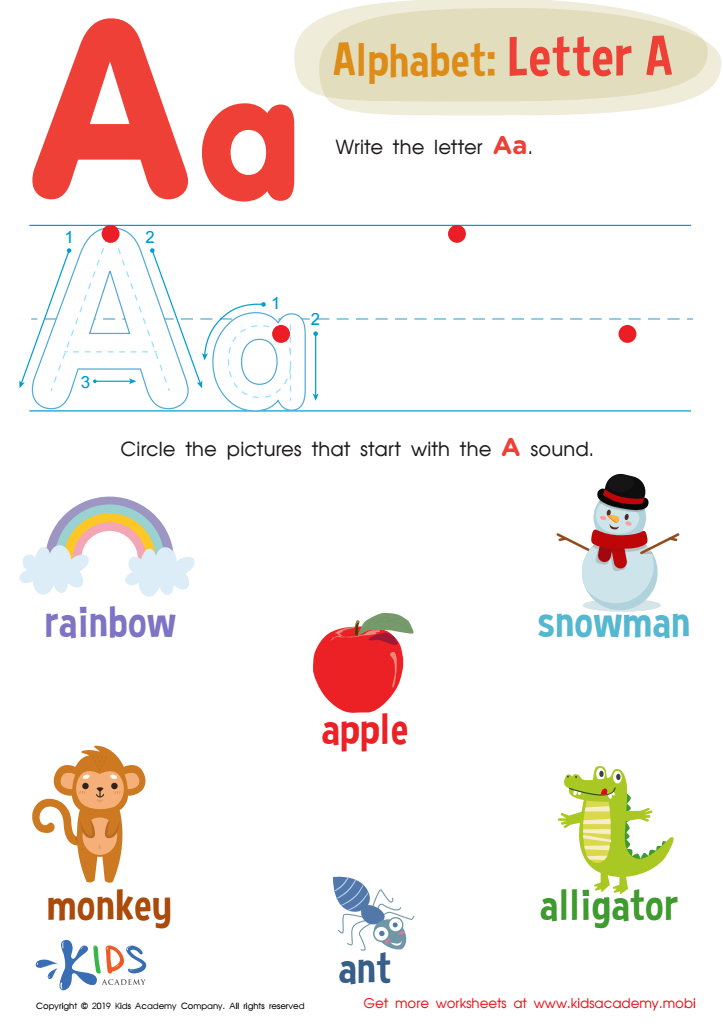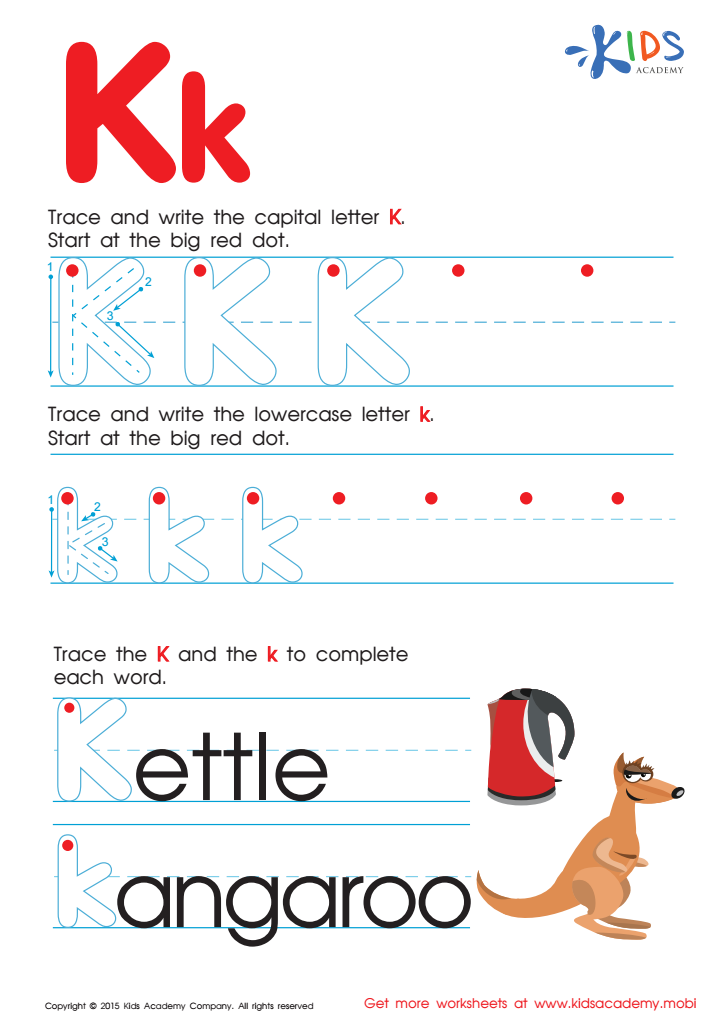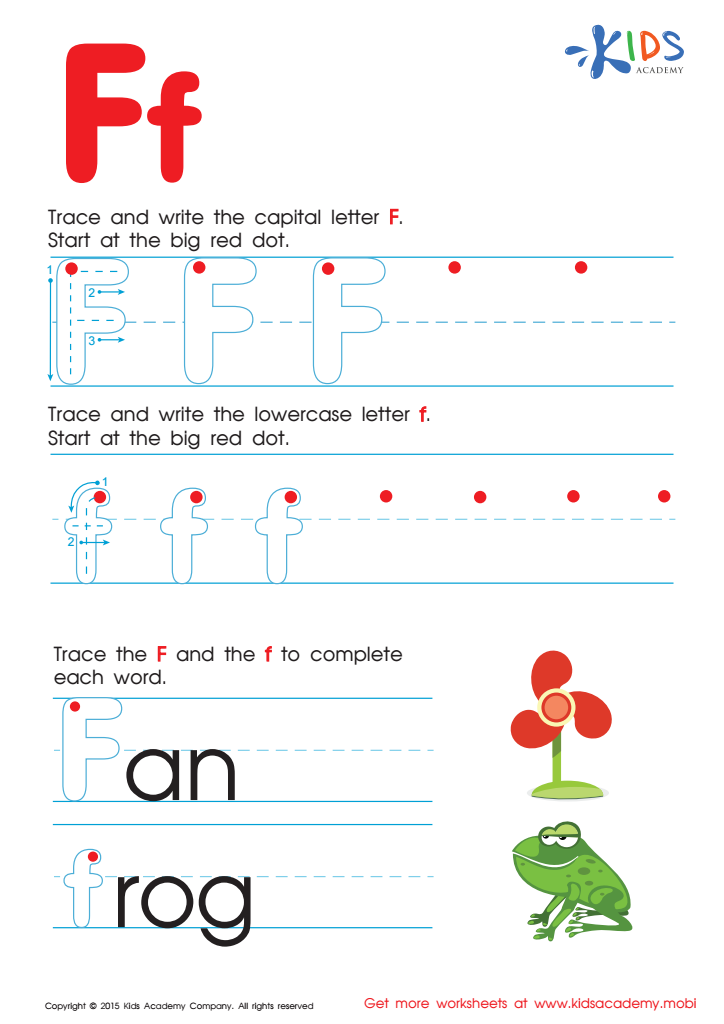Letter recognition Normal Tracing Letters Worksheets for Ages 5-7
9 filtered results
-
From - To
Introduce essential skills in letter recognition with our "Normal Tracing Letters Worksheets for Ages 5-7." These fun and engaging worksheets are tailored to help young learners form and identify letters accurately, setting a strong foundation for reading and writing. Each sheet offers clear, traceable letters that guide children in proper letter formation while enhancing their fine motor skills. Perfect for preschool to first grade, our tracing activities reinforce daily practice, ensuring kids learn at their own pace. Elevate your child's early education journey with these printable worksheets, available now at Kids Academy!


Letter P Tracing Page


Letter Q Tracing Page


Letter H Tracing Page


Letter G Tracing Page


Letter L Tracing Page


Letter A Tracing Worksheet


Letter K Tracing Page


Letter F Tracing Page


Letter D Tracing Page
Letter recognition through normal tracing activities is crucial for children aged 5-7 as it serves as the foundational step in their literacy development. At this early age, children's brains are highly receptive to learning new skills, making it an ideal period to introduce them to the world of letters and words. Tracing letters is not just an engaging activity; it helps children learn the shapes and forms of each letter, which is essential for reading and writing.
When kids trace letters, they develop fine motor skills by practicing the hand-eye coordination needed to control writing instruments precisely. This coordination is vital for future handwriting proficiency and legibility. Moreover, tracing activities reinforce memory retention, helping children remember the form and sound of each letter more effectively, contributing to phonemic awareness.
Moreover, gaining confidence in letter recognition and tracing fosters a sense of accomplishment and enhances children's motivation to participate in more complex literacy activities. For parents and teachers, engaging children in these crucial developmental exercises indicates a commitment to building a strong educational foundation. This groundwork in literacy will ultimately set the stage for higher academic achievement and a lifelong love for reading and learning. Therefore, prioritizing letter recognition through tracing can make a substantial difference in a child’s educational trajectory.
 Assign to My Students
Assign to My Students















